Outlook not Synchronizing
In the fast-paced digital world, seamless email synchronization is not just a convenience—it’s a necessity. For millions of users, Microsoft Outlook is the hub of communication, managing emails, appointments, and contacts across multiple devices. However, when Outlook does not sync, it can disrupt daily workflows and cause significant communication barriers.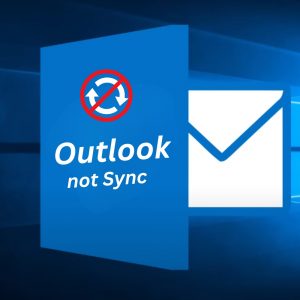
The symptoms of Outlook not synchronizing can vary widely but typically include not receiving new emails on all devices, calendar entries that appear on one device but not others, or contacts updates that fail to propagate across your systems. These synchronization issues can lead to missed appointments, outdated contact information, and delays in communication—potentially leading to larger scale disruptions in both personal and professional contexts.
This blog dives deep into the reasons why Outlook is not synchronizing, exploring both common and less typical scenarios where sync might fail. We will discuss issues like Outlook not syncing across devices, Outlook not syncing Google Calendar, and even specific problems like Outlook is not syncing with Gmail. By diagnosing these problems, we aim to equip you with robust solutions to restore synchronization and ensure that your Outlook runs smoothly, keeping your digital communication streamlined and efficient.
Whether you are a professional managing a busy schedule that relies on up-to-date calendar entries, or you simply need your email to sync seamlessly across your laptop and smartphone, understanding and resolving the issue of Outlook not syncing emails is critical. Stay tuned as we unravel the complexities behind these sync issues and provide actionable advice to solve them, ensuring that your Microsoft Outlook not syncing becomes a problem of the past.
Understanding Outlook Synchronization
This section delves into why keeping this information synchronized is crucial and identifies common culprits behind Outlook not synchronizing issues, such as network problems, incorrect settings, software bugs, and server downtimes.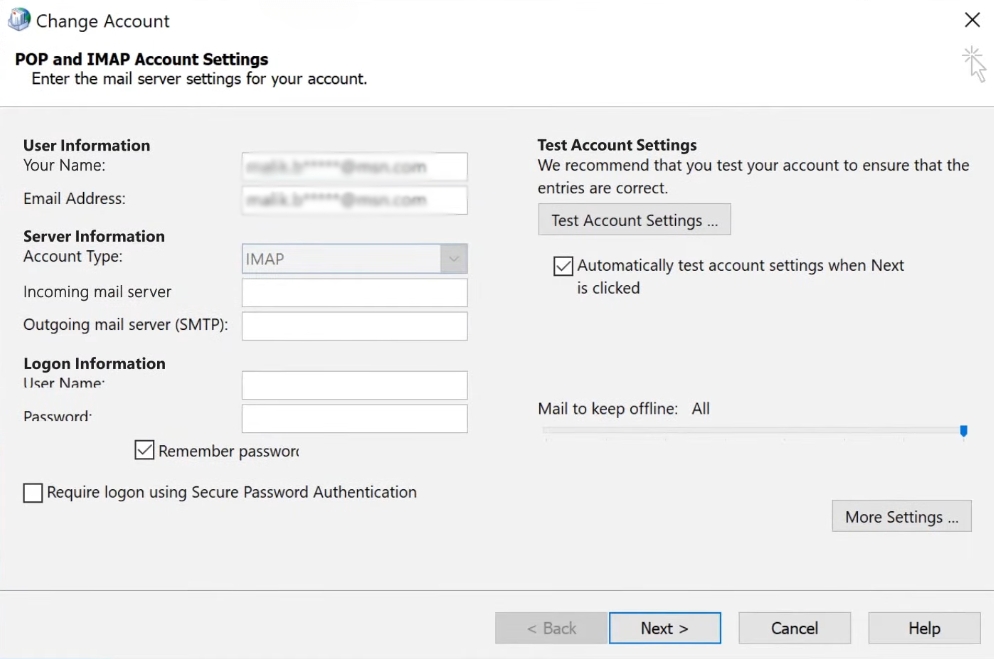
What is Outlook Synchronization?
Outlook synchronization refers to the process by which Microsoft Outlook maintains up-to-date information across all connected devices and services. This includes emails, calendar entries, contacts, and tasks. When Outlook syncs properly, any change made in one location is automatically reflected in all others. For example, an appointment added from your smartphone calendar will appear on your desktop Outlook calendar, provided the Outlook not synchronizing issue is absent.
The synchronization is facilitated by continuous communication between Outlook and your mail server—whether it’s an Exchange server, IMAP, or POP3 setup. This ensures that no matter which device you use to access your Outlook account, you have consistent and updated data, which is crucial in today’s mobile and interconnected world. It’s especially important in professional settings where coordination and timeliness are key, making the potential impact of Outlook not syncing across devices or Outlook not syncing emails a significant disruption.
Common Reasons for Outlook Not Synchronizing
Several factors can disrupt the otherwise smooth operation of Outlook synchronization:
-
Network Problems:
A weak or unsteady internet connection can prevent Outlook from getting connected to the server, leading to Outlook not synchronizing.
-
Incorrect Account Settings:
If account settings are not configured correctly, it may result in Outlook not synchronizing This includes incorrect server addresses, port numbers, or security protocols, particularly when setting up Outlook with Gmail or other third-party email services.
-
Outlook Software Issues:
Bugs or glitches in the Outlook application itself can cause Microsoft Outlook not syncing.
-
Server Downtime or Maintenance:
If the email server is undergoing maintenance or experiences downtime, users will encounter Outlook not synchronizing.
Understanding these common causes and maintaining vigilance over your network and account settings can significantly reduce the chances of encountering Outlook not syncing Google Calendar and similar sync issues, thus ensuring a smooth and reliable Outlook experience across all your devices.
Preliminary Checks before Troubleshooting Outlook not Synchronizing
Before diving into more complex troubleshooting techniques to fix the issue of Outlook not synchronizing, it’s essential to perform some preliminary checks. These basic steps can often resolve common issues, preventing the need for more intensive solutions.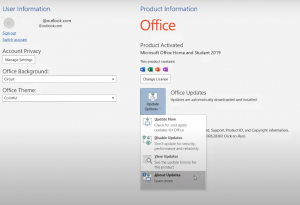
Check Your Internet Connection
A stable internet connection is foundational for Outlook to synchronize data effectively across devices. When Outlook does not sync, the first step should be to verify that your network connection is active and stable. To check your connectivity:
-
Test Your Connection:
Use a simple internet speed test to ensure your connection is active and fast enough for data synchronization.
-
Restart Your Router:
Sometimes, simply restarting your network hardware can resolve temporary connectivity issues that may cause Outlook not synchronizing.
-
Check Wi-Fi vs. Ethernet:
If possible, switch to an Ethernet connection, which can be more stable than wireless, especially if you’re experiencing Outlook not syncing across devices.
These steps help ensure that your Outlook is not synchronizing due to simple network issues, which are often overlooked yet easily fixed.
Ensure Outlook Is Updated
Utilizing the latest version of Microsoft Outlook is crucial to avoid Outlook not synchronizing problems. Outdated software may lack the necessary patches that resolve sync issues and improve overall stability and security. To ensure your Outlook is updated:
-
Check for Updates:
Open Outlook and navigate to the “File” menu, select “Office Account,” then “Update Options,” and finally “Update Now.” This will force Outlook to look for and install any available updates.
-
Enable Automatic Updates:
To avoid future Outlook not synchronizing issue, set Outlook to automatically download and install updates. This option can also be found under “Update Options.”
Keeping your software up-to-date is a simple and effective way to prevent many common issues related to Outlook not syncing emails or Outlook not syncing Google Calendar. By conducting these preliminary checks, you can often resolve or identify the cause of Outlook not synchronizing issue without needing to delve into more complex troubleshooting steps. This proactive approach is the key to maintain seamless communication and scheduling efficiency in your daily use of Microsoft Outlook.
Common Reasons due to which Outlook does not sync and Solutions
This section delves into prevalent issue of Outlook not synchronizing and offers strategic solutions to ensure Microsoft Outlook operates smoothly. We’ll address various reasons why Outlook is not synchronizing and assist you through resolving these disruptions to restore full functionality.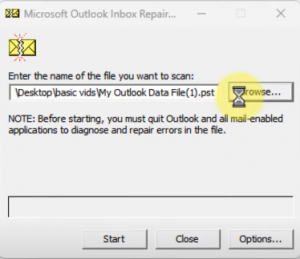
Resolving Password Errors
Incorrect password settings are a frequent cause of Outlook not synchronizing. Updating your password might quickly resolve this issue.
-
Update Password in Outlook:
- Navigate to File > Account Settings in Outlook.
- Select the email account with which Outlook is not synchronizing and click ‘Change’.
- Input the new password, save the changes, and restart Outlook to see if Outlook not synchronizing issue has been resolved.
-
Troubleshooting Persistent Issues:
- Confirm password updates on all devices using the same Outlook account.
- If Outlook does not sync still, reset your email password via your email provider and update it in Outlook.
Dealing with Large Mailboxes in Outlook
Excessively large mailboxes can degrade performance and cause Outlook not synchronizing. Effective mailbox management is the key to prevent this issue.
-
Archive Old Emails:
- Utilize Outlook’s auto-archive feature to move old emails to an archive, reducing your primary mailbox size.
- Clean out unnecessary emails and attachments regularly.
-
Mailbox Management Tips:
- Establish rules in Outlook to sort emails automatically, maintaining a manageable inbox size.
- Periodically delete large files and emails that are no longer needed.
Repairing Outlook Data Files
Corrupted Outlook data files often lead to Outlook not syncing emails.
-
Using the Inbox Repair Tool (ScanPST.exe):
- Find this tool in your Outlook installation directory.
- Exit Outlook, run ScanPST.exe, select the corrupt .pst file, and initiate the repair.
-
Identifying Signs of Corruption:
- Frequent errors or application freezes when accessing emails.
- Emails or items that appear missing or inaccessible.
Reconfiguring Outlook Account Settings
Improper account settings can cause Outlook not syncing across devices.
-
Remove and Re-add Email Account:
- Remove the troubled account via File > Account Settings in Outlook, then add it back with accurate IMAP/POP3 settings.
-
Ensure Correct Server Settings:
- Verify server addresses, port settings, and authentication methods.
- Experiment with switching between IMAP and POP3 configurations to optimize Outlook synchronization.
Addressing these specific issues with focused solutions will significantly enhance your Outlook synchronization experience, ensuring that Outlook not syncing across devices, Outlook not syncing Google Calendar, or Outlook not syncing emails problems are efficiently resolved, restoring your Microsoft Outlook to optimal functionality.
Advanced Troubleshooting Tips for Outlook Not Synchronizing Issue
When basic troubleshooting doesn’t resolve the issue of Outlook not synchronizing, it’s time to employ more advanced techniques. This section provides a detailed assistance on using specialized tools and procedures to tackle persistent Outlook not synchronizing problems effectively.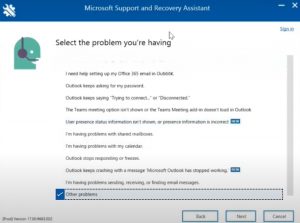
Utilizing the Microsoft Support and Recovery Assistant
The Microsoft Support and Recovery Assistant is a strong tool designed specifically to diagnose and resolve Outlook not synchronizing issue, among other Microsoft services problems. It’s particularly useful when Outlook does not sync consistently or when you encounter complex errors that standard troubleshooting can’t fix. Let us see how we can use the Microsoft Support and Recovery Assistant
-
Download the Tool:
Visit the official Microsoft website and download the Support and Recovery Assistant.
-
Install and Run the Tool:
Follow the installation steps and open the tool. Select Outlook as the service you are experiencing issues with.
-
Follow the Steps:
The tool will assist you through a series of steps, checking various settings and configurations that might be causing the issue of Outlook not synchronizing.
-
Automatic Resolution:
If possible, the assistant will automatically fix any detected issues with Outlook not synchronizing.
This assistant is particularly effective for resolving complex issues like Outlook not syncing Google Calendar or when Outlook is not syncing with Gmail, providing a straightforward method to address synchronization barriers.
Creating a New Outlook Profile
Sometimes, the best way to resolve persistent Outlook sync issues is by starting fresh with a new Outlook profile. This can be specifically helpful if your current profile is corrupt or overly cluttered with old data, which can hinder performance and cause Outlook not syncing across devices. Below are the steps to create and configure a new Outlook profile:
-
Open Control Panel:
Navigate to Control Panel > Mail > Show Profiles.
-
Add a New Profile:
Click ‘Add’ and enter a name for the new profile. Follow the steps to add your email accounts and configure settings.
-
Set as Default:
Ensure you set the new profile as the default one so Outlook will use it when launching.
-
Test Synchronization:
Launch Outlook with the new profile and check if the issue of Outlook not synchronizing is resolved, ensuring that your problem is addressed.
Through these advanced troubleshooting techniques, addressing the persistent issue of Outlook not synchronizing becomes more manageable, restoring full functionality and ensuring that Microsoft Outlook operates smoothly across all your devices and platforms.
Preventative Measures to Avoid Outlook Not Synchronizing
To minimize the occurrence of Outlook not synchronizing issue and enhance overall performance, it’s essential to adopt certain preventative measures and best practices. This section outlines proactive steps that can help avoid the issue where Outlook does not sync and ensure that it functions optimally across all devices.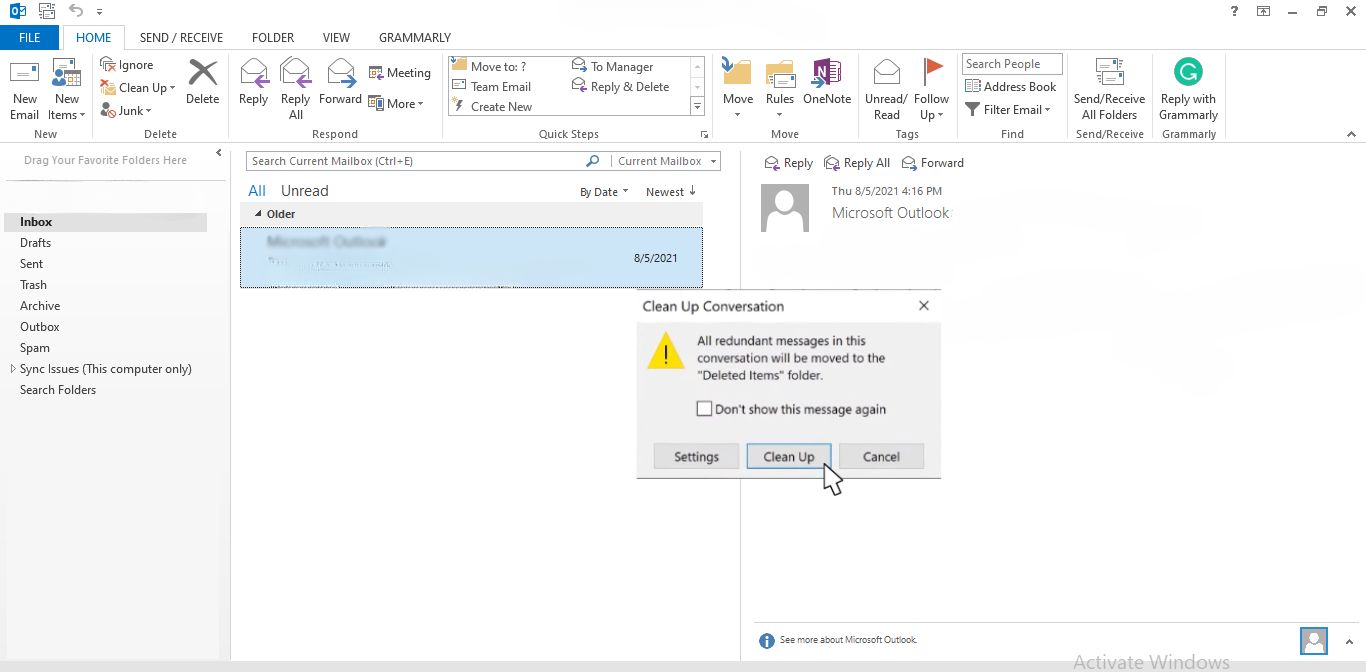
Regularly Updating Software
Regular updates play a crucial role to prevent the issue where Outlook does not sync. Software updates frequently contain fixes for bugs that could cause Outlook not synchronizing, as well as enhancements that improve the stability and functionality of the application. Let’s see how to set up automatic updates:
-
Access Update Settings:
Open Outlook and go to the File menu, select Office Account, then click on Update Options.
-
Enable Automatic Updates:
Choose ‘Enable Updates’ if it’s not already selected. This ensures that your Outlook installation receives the latest fixes and features automatically, reducing the risk of Outlook not syncing emails and other related issues.
Keeping Outlook up-to-date is one of the simplest yet most effective strategies to prevent the issue where Outlook is not synchronizing, ensuring that your communication tools remain reliable and secure.
Effective Outlook Mailbox Management
Efficient mailbox management is vital for preventing performance lags and issue where Outlook is not synchronizing. An organized mailbox enhances the application’s performance, reduces the load times, and prevents the issue of Outlook not syncing across devices. Let us have a look at the best practices for mailbox management in Outlook:
-
Regularly Archive Old Emails in Outlook:
Utilize Outlook’s archiving features to keep your inbox size manageable. This not only helps in maintaining speed but also ensures that Outlook does not sync unnecessarily large volumes of data.
-
Use Folders and Categories:
Organize emails into folders and categories. This segmentation helps in faster retrieval and efficient synchronization, particularly when Outlook is not syncing with Gmail or other accounts.
-
Clean Up Regularly:
Use tools like Clean Up folder to remove redundant emails and Conversation Clean Up to clear redundant messages from conversations.
Adopting these mailbox management techniques can greatly reduce the chances of encountering Outlook not syncing emails and other sync issues, ensuring a smoother, more efficient Outlook experience.
By implementing these preventative measures and adhering to best practices for software updates and mailbox management, you can significantly mitigate common problems such as Outlook not synchronizing.
FAQs
Q. Why is my Microsoft Outlook not syncing?
- A. If Microsoft Outlook is not synchronizing, it could be due to various reasons such as unstable internet connections, outdated Outlook software, or incorrect account settings. Make sure that your device has a suitable internet connection and that Outlook is updated to the latest version.
Q. What should I do if Outlook does not sync across all my devices?
- A. If Outlook does not sync across devices, first check your account settings to ensure they are consistent across all devices. Also, verify that all devices are connected to the internet and running the same version of Outlook.
Q. How can I fix issues where Outlook is not syncing with Gmail?
- A. To resolve issues where Outlook is not syncing with Gmail, ensure that IMAP is enabled in your Gmail settings and that the account settings in Outlook match those recommended by Gmail. This includes checking server settings and authentication methods.
Q. Why are my emails not updating in the Outlook app on my Mac?
- A. If the issue of Outlook on Mac not syncing occurs, it’s important to check for any available updates for your Outlook app or macOS. Additionally, reviewing network settings and ensuring that your account credentials are correctly configured can help resolve the syncing issue.
Q. Why did Outlook stop loading after synchronization?
- A. If Outlook stopped loading post-synchronization, it might be due to a corrupted data file or an incomplete update. Try restarting Outlook in Safe Mode and run the built-in repair tool. If the issue persists, you can read our detailed blog on Outlook emails not loading and get your issue fixed quickly.
Q. What steps can I take if my Outlook is not synchronizing with Google Calendar?
- A. For issues like Outlook not syncing Google Calendar, make sure that you have set up the calendar accounts correctly in both Outlook and Google. Sometimes, removing and re-adding the account can help refresh the connection and resolve synchronization problems.
Conclusion
Throughout this blog, we have examined various factors causing Outlook not synchronizing and also understanding the basic syncing process to diving deep into advanced troubleshooting techniques. The ability to maintain seamless sync in Microsoft Outlook is crucial, not only for ensuring that your emails, calendars, and contacts are updated across devices but also for maintaining efficiency and productivity in your daily communications.
We’ve emphasized the importance of regular updates and efficient mailbox management as key strategies to prevent common problems such as Outlook not synchronizing or Outlook not syncing across devices. These preventative measures are your first line of defense against potential disruptions in Outlook’s synchronization capabilities.
We strongly encourage you to follow the outlined guidelines to enhance your email management. Implementing these practices will help ensure that issue like Outlook not syncing emails is minimized, allowing you to focus more on what’s important without the hassle of technical disruptions.
Should you encounter persistent issue where Outlook is not synchronizing, or if you need further assistance beyond the solutions provided in this blog, do not hesitate to contact our support team. Our experts are ready and available to assist you with any Outlook not synchronizing issues you might face. You can find our support number on our Microsoft Support Page. We are committed to providing you with effective solutions to ensure that your experience with Microsoft Outlook is as smooth and reliable as possible. Remember, help is just a phone call away!

